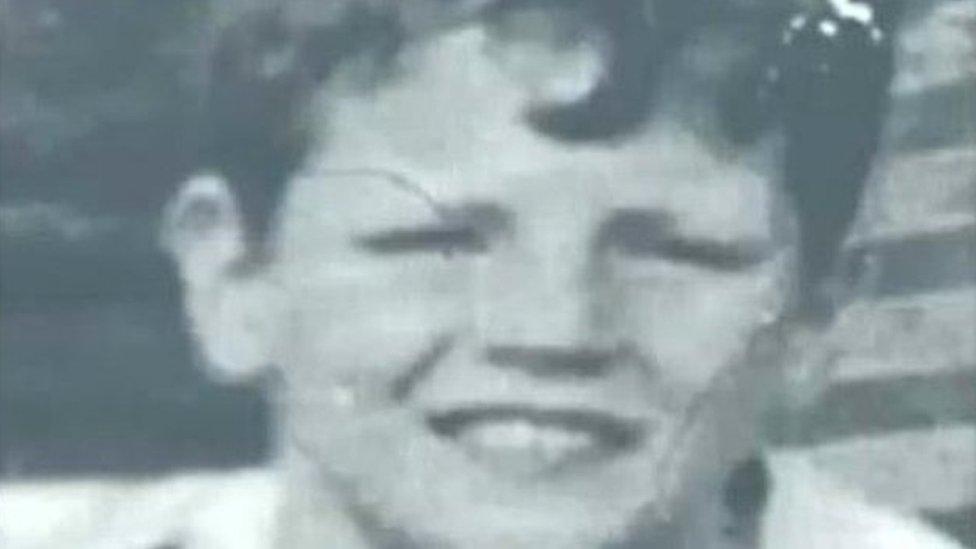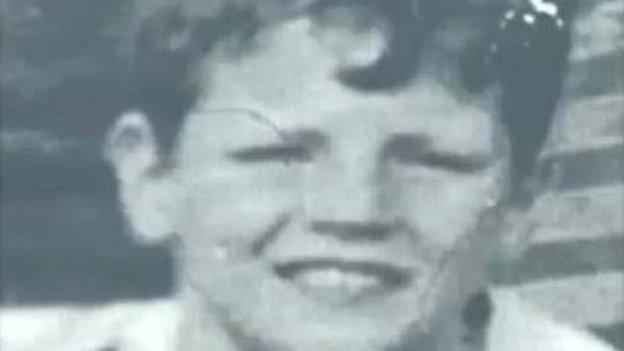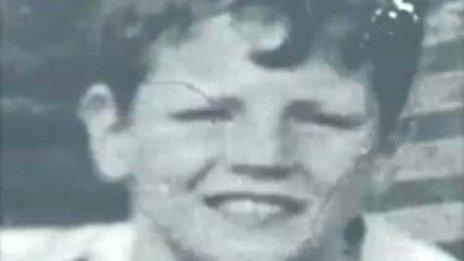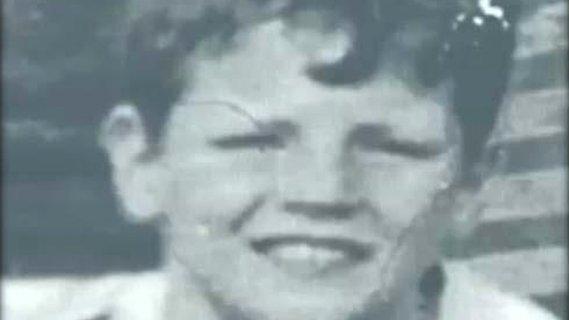Rowntree inquest: Soldiers offered 'no first aid' to boy struck by baton round
- Published

Eleven-year-old Francis Rowntree died after he was struck by a rubber bullet
A witness at the inquest into the death of 11-year-old Frank Rowntree says soldiers went to look at him after he had been struck by a rubber bullet, but did not offer any first aid.
Frank died two days after the west Belfast incident, in April 1972.
Bernadette Connolly told the court she saw an army Saracen vehicle with a rifle and rubber baton round gun poking out of the hatches.
She explained how she heard a bang and saw a young boy lying on the ground.
Mrs Connolly, who was 14 at the time, said she saw no rioting in the immediate area of Divis Flats at the time, although she had heard some elsewhere in the general area a little earlier.
Drove off
The court heard a statement Mrs Connolly had previously given to the Historical Enquiries Team (HET) stating that two soldiers got out of the vehicle and looked at the boy, lifted something she could not see from the ground and left without offering him first aid.
"I thought they were going to help. But they were looking for something," Mrs Connolly said.
She later added "They picked something up and drove off."
Frank Rowntree suffered serious head and brain injuries having been struck above the left ear, and never recovered.
There have been allegations that the rubber bullet had been doctored to add a battery to the cartridge.
Holding his hand
Mrs Connolly said she then approached the boy, called for help, and arranged for him to be carried to the home of her sister, Mary Kennedy, who was a nurse.
Mrs Connolly later went with Frank in an ambulance to the Royal Victoria Hospital, holding his hand until his family arrived.
Commenting on her memory of 44 years ago, Mrs Connolly said
"It's a day I'll never forget. It's just etched on my mind."
Earlier, former state pathologist Prof Jack Crane said that he thought that Frank Rowntree had been struck directly from a distance of a few metres by something smooth, without any sharp edges.
The court had previously examined what a soldier would have been able to see from inside an armoured vehicle.
Brian Murphy, a civil engineer, had examined Humber Pig vehicles for the coroner, and gave evidence on various hatch sizes, and the potential field of view of a soldier attempting to fire a baton round.
His evidence suggested that a soldier would have had a "very limited view" out of the vehicle.
Rules of engagement
Once a baton round gun was inserted into the hatch, there was even less opportunity to see what it was pointing at.
It was suggested that it would have been difficult to point the weapon at a point on the ground any closer than approximately 11 metres from the vehicle.
Medical evidence suggests that Frank Rowntree was struck directly by the projectile from a distance of just a few metres.
The army rules of engagement advised soldiers to aim at the ground rather than directly at rioters, allowing the rubber bullet to ricochet, but it has been established that in most cases this did not happen.
Army records suggest that well over 23,000 rubber baton rounds were fired in Northern Ireland in 1972.
A barrister for the Ministry of Defence later pointed out that Mrs Connolly had given a rather different statement to HET officers in July 2010.
At that time, the records showed she told them she saw one soldier pick up a battery and part of a rubber bullet.
She firmly denied the barrister's suggestion she was lying in 2010, to "blacken the name of the army".
Mrs Connolly told the court she did not lie in 2010, but now does not know what the soldiers picked up.
- Published14 April 2016

- Published11 April 2016

- Published25 March 2015

- Published5 August 2013
